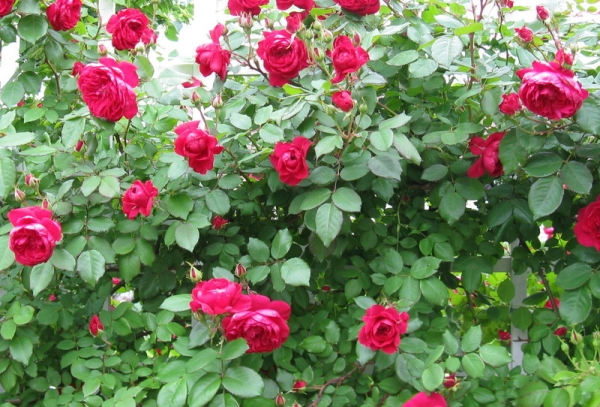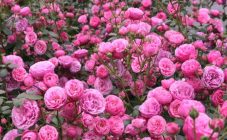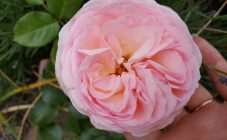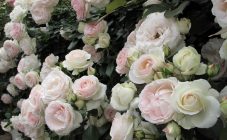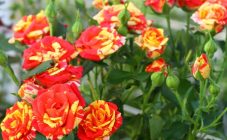Content:
Canadian climbing roses are widely recognized among flower growers for a reason. The abundance of forms and colors in the varietal variety are combined with increased endurance to various adverse factors, and even the most inexperienced amateur gardener can grow and care for it. The Kvadra variety is very popular from this group.
Characteristics and features of the variety
The history of Canadian rose breeding is a continuation of the wave that began more than 100 years ago with the suggestion of the German scientist R. Geschwind. Since 1950, the best breeders of the country have been engaged in their breeding with financial support from the Canadian government itself. The task was not an easy one - to bring out new varieties that would combine resistance to severe frosts and many diseases. And the scientists did it.
Rosa Kvadro is a climbing bush that feels great on any support and can reach a height of 1.5-1.8 m. Due to the good growth of side shoots, it can occupy an area of up to 1 m². Stems are weakly spiked and covered with dense, shiny foliage. Bend well and wrap around the support.
The Quadro variety has high frost resistance and quick recovery after winter. Thanks to its powerful root system, it is able to withstand short drought.
Agrotechnics
The Canadian Quadro rose is easy to grow, adhering to a long-standing scheme:
- the best time for planting is autumn. For this, a ready-made seedling or cutting is used, from which all leaves are previously removed, except for the top 2;
- loamy or neutral soils are suitable for cultivation. The place should be moderately lit, but not open;
- the hole is dug spacious (0.7 m²) and deep (up to 25 cm). The bottom is loosened to facilitate root growth and mineral and organic fertilizers are applied;
- for reliable rooting, the stem is deepened by 4-5 cm, the covered soil is trampled down and watered abundantly;
- it is recommended to cover the seedling before frost (a cut plastic bottle is suitable) and sprinkle with mulch.
Advantages and disadvantages of the variety
Rosa Kvadra, like most Canadian climbing roses, has a number of advantages over other varieties growing in the Middle Lane:
- excellent frost resistance - up to -40 ° С without shelter in snowy winters;
- high resistance to many diseases, in particular, to powdery mildew and black spot;
- well-developed branching, which makes it possible to widely use this variety in the garden and park landscape;
- profuse flowering until late autumn.
As for the shortcomings, this rosette practically does not have them. The only feature is that in regions with little snow, it is recommended to cover the bush with lutrasil or spruce branches for the winter.
Quadra is a rose that will decorate any garden, park and even an ordinary hedge with its lush flowering. Its many positive qualities and external parameters make it possible to distinguish this variety among other climbing roses and grow a new favorite on the site.
